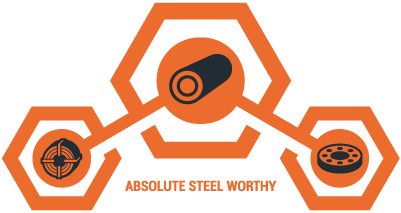STAINLESS STEEL FAMILY & APPLICATION
Although the corrosion resistance of stainless comes from the presence of Chromium, other elements are added to enhance other properties. These Stainless steel are grouped into families based on their metallurgical microstructure. The microstructure may be composed of the stable phases austenite or ferrite, a “duplex” mix of these two, martensite or a hardened structure containing precipitated micro-constituents.
Austenitic Stainless Steels
Austenitic stainless steel contain a minimum of 16% chromium and 6% nickel. They range from basic grades like 304 through to super austenitics such as 904L and 6% Molybdenum grades.
By adding elements such as Molybdenum, Titanium or Copper, the properties of the steelcan be modified. These modifications can make the steel suited to high temperature applications or increase corrosion resistance. Most steels become brittle at low temperatures but the Nickel in austenitic stainless makes it suited to low temperature or cryogenic applications.
Austenitic stainless steel are generally non-magnetic. They are not able to be hardened by heat treatment. Austenitic stainless steel rapidly work-harden with cold working. Although they work harden, they are the most readily formed of the stainless steel.
The principal alloying elements are sometimes reflected in the name of the steel. As an a common name for 304 stainless steel is 18/8, for 18% chromium and 8% nickel.
Ferritic Stainless Steels
Ferritic stainless steel include grades like 430 and contain only chromium as a major alloying element. The quantity of chromium present ranges from 10.5 to 18%.
They are known for their moderate corrosion resistance and poor fabrication properties. Fabrication properties can be improved by alloy modifications and are satisfactory in grades such as 434 and 444. Ferritic stainless steel cannot be hardened by heat treatment and are always used in the annealed condition.
Ferritic stainless steel are magnetic. They are also not susceptible to stress corrosion cracking. Weldability is acceptable in thin sections but decreases as section thicknesses increase.
Martensitic Stainless Steels
High carbon and lower chromium content are the distinguishing features of martensitic stainless steel when compared with ferritic stainless.
Martensitic stainless steel include 410 and 416. Hardened martensitic steels cannot be successfully cold formed. They are magnetic, have moderate corrosion resistance and poor weldability.
Duplex Stainless Steels
Duplex stainless steel have high chromium and low nickel contents. This gives duplex stainless steel microstructures that include both austenitic and ferritic phases. They include alloys like 2304 and 2205. These alloys are so named due to their respective compositions – 23% chromium, 4% nickel and 22% chromium, 5% nickel.
By having both austenite and ferrite in the microstructure, duplex stainless steel feature properties of both classes. Although a compromise between the two ‘pure’ types, duplex grades can offer some unique property solutions. Duplex grades are resistant to stress corrosion cracking, but not to the same level as ferritic grades. The toughness of duplex grades is superior to that of the ferritic grades – but inferior to that of the austenitic grades.
Most importantly, the corrosion resistance of duplex steels is equal, or superior to 304 and 316 stainless steel. This is particularly so for chloride attack.
Duplex grades are readily welded. They also have high tensile strengths.
Precipitation Hardening Grades
Precipitation hardening grades contain both Chromium and Nickel. They develop very high tensile strengths with heat treatment. Precipitation hardening grades are usually supplied in a “solution treated” condition that allows the steel to be machined. After machining or forming, the steel can be aged in a low temperature heat treatment process. As the heat treatment is performed at low temperatures, no distortion is induced in the work piece.
630 is the most common precipitation hardening grade. This grade is also known as 17-4 PH due to a composition of 17% chromium, 4% nickel, 4% copper and 0.3% niobium.
Austenitic Stainless Applications
Applications for austenitic stainless steel include:
- Kitchen sinks
- Architectural applications such as roofing and cladding
- Roofing and gutters
- Doors and Windows
- Balustrading
- Benches and food preparation areas
- Food processing equipment
- Heat exchangers
- Ovens
- Chemical tanks
Ferritic Stainless Applications
Ferritic stainless steel are typically used in:
- Vehicle exhausts
- Fuel lines
- Cooking utensils
- Architectural trim
- Domestic appliances
Martensitic Stainless Applications
Martensitic stainless steel are typically used for:
- Knife blades
- Cutlery
- Surgical instruments
- Fasteners
- Shafts
- Springs
Duplex Stainless Applications
Duplex stainless steel typically find application in areas like:
- Heat exchangers
- Marine applications
- Desalination plants
- Food pickling plants
- Off-shore oil & gas installations
- Chemical & petrochemical plant
Precipitation Hardening Applications
Precipitation hardening stainless steel are typically used for:
- Pulp and paper industry equipment
- Aerospace applications
- Turbine blades
- Nuclear waste casks
- Mechanical components
